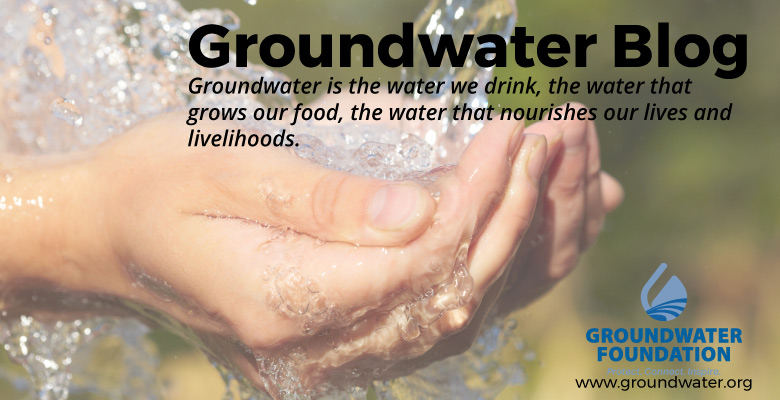By Jay Beaumont,
Groundwater Foundation Board Member
Sometimes groundwater is regional, and sometimes groundwater
is personal.
When I do the groundwater model demonstration, I get
questions about fracking and road salt; I get stories about the quality of
water coming out of the tap, and I get Ah Hah moments of understanding.

The two big regional issues in the Northeast are hydraulic
fracturing (fracking) and high chlorides levels in the ground water.
Most of my visitors were aware of the
fracking debate, but more often than not, they asked how my model shows how the
fracking affects water supply wells. I would say at the scale of the model the
fracking would take place 1,000 feet below the model, but the problems often
take place in the shallow aquifers that we see in the model.
High chloride levels in the groundwater are not on most people’s
radar screens. Every once in a while, a
savvy soul will bring up high levels of chlorides found in wetlands and well
water. The high levels are caused by the
ubiquitous use of road salt during the winter.
And, unfortunately, sodium and chloride ions do not breakdown any
further in the groundwater. I fear the
road salt impacts will be with us long after the fracking debate has faded
away.

Sometimes groundwater is very personal.
One visitor mentioned he noticed groundwater
seeping out of the rocks on the path up
Beacon Mountain
the day after Tropical Storm Andrea passed through; a spring!
Another visitor was very proud of his work to reduce the
sulfur smell in his water. Sulfur water
is very common around here. He installed
a pressure tank without a bladder, and he is able to vent the sulfur gas
several times per week.
The Fishkill Creek is near the City of Beacon.
Part of the aquifer under the creek has been contaminated by industrial
pollution. The pollution is so bad that
industry teamed with Dutchess County to construct a pipeline from Poughkeepsie south to the Fishkill area to
bring clean water.
A visitor to my demonstration said she lives near the Fishkill
Creek aquifer. She is worried, because
she often gets an oily sheen on her coffee in the morning. I could only offer the name of a good lab
where she can have the water tested.
Some of the visitors were concerned about pollution from
buried oil tanks. We shared stories
about removing tanks, and what happened when the tanks had leaks in them.
The Ah Hah moments were plentiful – groundwater moves,
albeit slowly; pollution moves with the groundwater; wells drawdown and
recover; gravel is more permeable than sand; and it is much cheaper to prevent
water pollution than the clean up water pollution.

The Beacon Sloop club is a wonderful host.
They gave me a nice shady location with lots
of passersby.
And, the best part is the
free strawberry shortcake for us exhibitors.







